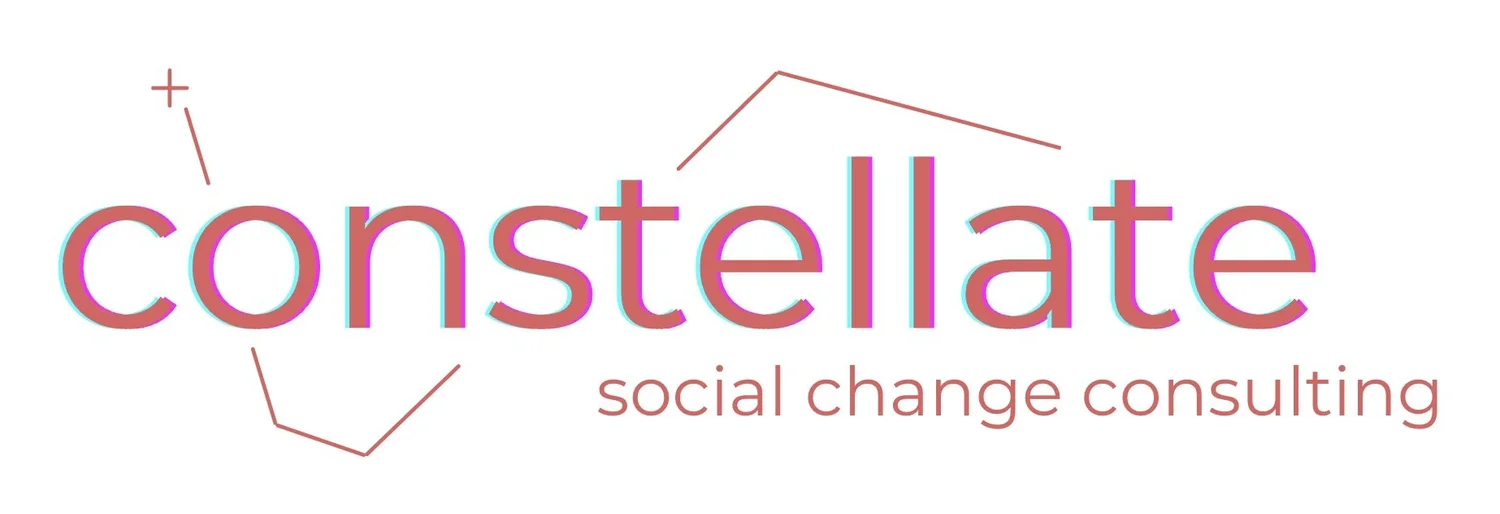Click here for more info!
--
Time-limited offering: End-of-Year Project Support
--
Click here for more info! -- Time-limited offering: End-of-Year Project Support --

Change is inevitable – and necessary.
Social change organizations exist precisely because we refuse to allow things to continue as they are. We know that injustices like poverty, homelessness, discrimination, environmental destruction, and health disparities aren’t inevitable; in fact, those of us working for social change organizations have dedicated our careers to changing them. The refusal to accept the status quo is a radical act of imagining a more just future and taking sustained action to make it happen.
Constellate is here to help.
“We need to pay attention to what we practice. Each practice of an organization is a small scale way to grow or shrink its own realization of its espoused mission and values.”
— adrienne maree brown, Holding Change
Constellate helps mission-driven organizations integrate and activate their values, strategies, systems, and execution to adapt and succeed in increasingly volatile political, economic, and environmental conditions. Working together to create regenerative, creative, and future-oriented solutions, Constellate helps clients stay grounded in purpose and possibility as they lead their organizations and communities through internal and external transformation.
Why is “how we change” so important?
Many mission-driven organizations excel at articulating their Theory of Change—how their work leads to broader societal impact. But managing shifts internally – such as a change in funding or a new initiative – can often feel like a scramble. This scramble pulls organizations out of alignment with their values and creates internal stumbling blocks, like staff burnout, turnover, and insufficient operational infrastructure, that can limit positive gains and delay forward movement.
What’s more, disruptions to “normal operations” are happening more frequently than ever, and are likely to increase over time due to social, economic, and environmental volatility. A leadership transition is now compounded by unpredictable federal funding, and program priorities are changing amidst hiring freezes, both of which put greater pressure on the staff who remain. This collision of disruptions can be alarming and often feel like the beginning (or middle) of a negative spiral within the organization, but, when managed well, they can actually become our best opportunities to make positive shifts towards the future we are trying to create.
The challenge is that most organizations struggle with how to change, even when they’re clear about what the change is (which is also not always the case!). Even when change management practices are used, they are added too late to make much difference. Leaders often feel too overwhelmed and without the resources or expertise to conduct a thorough change management process on top of everything else. This lack of process hinders an organization’s ability to fully realize their mission: it’s often the invisible culprit causing strategic plans to go un-implemented, new initiatives to falter, staff to become dissatisfied, and work to feel stagnant and ineffective.
Together, we won’t let that happen.
Let’s constellate together.
Have questions? Interested in working together? Fill out some info and Abby will be in touch shortly!
